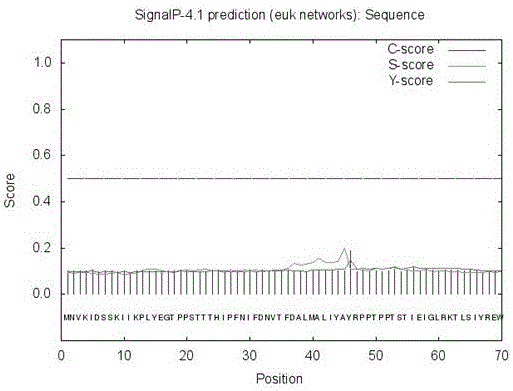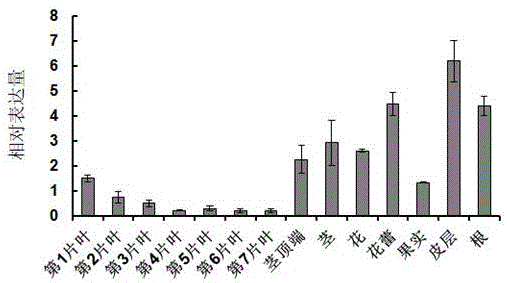Gene for improving plant disease resistance and application thereof
A disease resistance and plant technology, applied in the field of genetic engineering, can solve the problems of large differences in promoter regions and different induced expression patterns
- Summary
- Abstract
- Description
- Claims
- Application Information
AI Technical Summary
Problems solved by technology
Method used
Image
Examples
Embodiment Construction
[0059]The methods used in the following embodiments are conventional methods unless otherwise specified, and the primer sequences used are all synthesized by Shanghai Handsome Biotechnology Co., Ltd., and the stated percentages are all mass percentages. The tomato materials used in this experiment were the TYLCV-resistant CLN2777A and the susceptible variety TMXA48-4-0 (Chen T, Lv Y, Zhao T, Li N, Yang Y, Yu W, HeX, Liu T, and Zhang B*.Comparative Transcriptome Profiling of a Resistant vs. Susceptible Tomato (Solanum lycopersicum) Cultivar in Response to Infection by Tomato Yellow Leaf Curl Virus. PLoS One, 2013, 8(11):e80816). The tobacco is Nicotiana benthamiana. Both tomato and tobacco were grown in a plant growth chamber. The light intensity is 130 μmolphotons m –2 the s –1 , with a humidity of 65%.
[0060] 1. Acquisition of LeAct1 and bioinformatics analysis
[0061] In our laboratory, we analyzed transcriptome differences before and after inoculation of anti-suscep...
PUM
 Login to view more
Login to view more Abstract
Description
Claims
Application Information
 Login to view more
Login to view more - R&D Engineer
- R&D Manager
- IP Professional
- Industry Leading Data Capabilities
- Powerful AI technology
- Patent DNA Extraction
Browse by: Latest US Patents, China's latest patents, Technical Efficacy Thesaurus, Application Domain, Technology Topic.
© 2024 PatSnap. All rights reserved.Legal|Privacy policy|Modern Slavery Act Transparency Statement|Sitemap



